This profile has been superseded by the 2019 version, which is available here.
View the complete Australian forest profiles series.
Information for this profile is drawn from Australia's State of the Forests Report 2013.
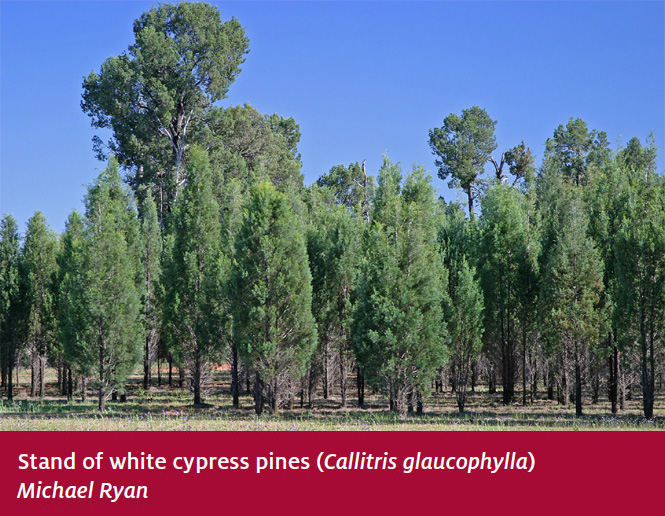 Callitris trees are found only in Australia and New Caledonia with 13 of the 15 species found in Australia. Callitris trees are commonly called cypress pines because they are related to, and resemble, northern hemisphere cypresses. However, they are not true pines.
Callitris trees are found only in Australia and New Caledonia with 13 of the 15 species found in Australia. Callitris trees are commonly called cypress pines because they are related to, and resemble, northern hemisphere cypresses. However, they are not true pines.
Australia has 2.1 million hectares of the Callitris forest type. This forest type typically grows in small patches in drier inland regions, but occasionally covers wide areas. Pure stands of callitris are generally restricted to undulating or flat land with sandy soils, or to upland rocky areas that are protected from fire. Individual callitris trees are often present in Acacia, Casuarina and Eucalypt forests with a shrubby, grassy or herb-rich understorey.
The name callitris is derived from the Greek words kallos (beauty) and treis (three) and refers to the arrangement of leaflets in whorls of three.
Distribution and ownership
Callitris forests occur in all states (Map 1). A total of 1.5 million hectares (70 per cent) of the Callitris forest type is in New South Wales, mainly in the Central West and New England regions. Callitris forest also extends through Queensland’s Darling Downs and Central regions. White cypress pine (Callitris glaucophylla) is widespread south of the Tropic of Capricorn, with extensive stands in southern Queensland and northern New South Wales. Small stands of callitris trees are found in south-western Western Australia, including the Rottnest Island pine (C. preissii), which is endemic to the region.
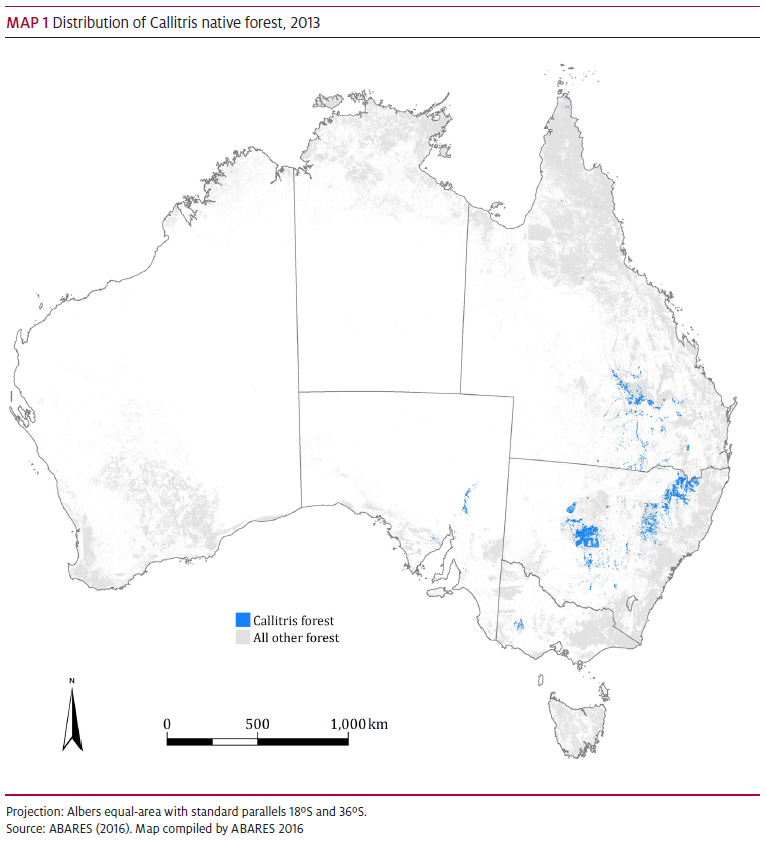
Open a high-resolution version of Map 1 that can be saved as a PNG file
A total of 1.0 million hectares (45 per cent) of Callitris forest is on leasehold land and 0.7 million hectares (12 per cent) are on private land (Table 1).
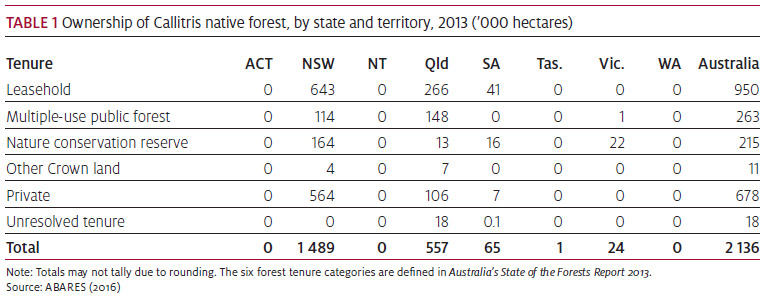
Download Table 1 data as an Excel workbook
Forest structure
Fifty-five per cent of Callitris forest (1.1 million hectares) is open forest (Figure 1). Most species of callitris are medium-sized trees, and 91 per cent of Callitris forest (1.9 million hectares) is medium height. Brush cypress pine (C. macleayana) can grow up to 50 metres high.
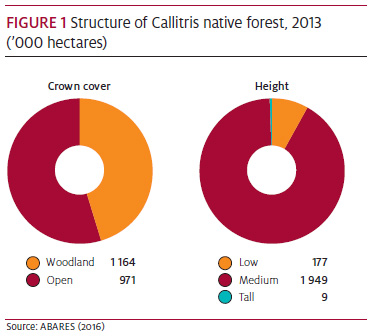
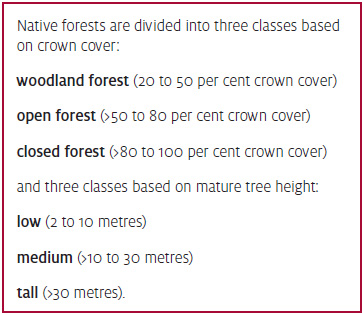
Uses
Some species of callitris, such as the Port Jackson pine (C. rhomboidea), have durable, insect-resistant wood. Callitris timber is widely used for flooring, lining boards, weatherboards, interior joinery and cabinets, and fencing poles and posts.
Resins from callitris trees have traditionally been used by Indigenous Australians as an adhesive for attaching axe heads to handles, and barbs and tips to spears.
Bibliography
ABARES 2016, Forests of Australia (2013) v2.0, Australian Bureau of Agricultural and Resource Economics and Sciences.
Boland, D, Brooker, M, Chippendale, G, Hall, N, Hyland, B, Johnston, R, Kleinig, D, McDonald, M & Turner, J 2006, Forest trees of Australia, 5th edn, CSIRO Publishing, Melbourne.
Carnahan, JA 1990, Atlas of Australian resources, vol. 6, Vegetation, Australian Government Publishing Service, Canberra.
Montreal Process Implementation Group for Australia & National Forest Inventory Steering Committee 2013, Australia’s State of the Forests Report 2013, Australian Bureau of Agricultural and Resource Economics and Sciences, Canberra.
